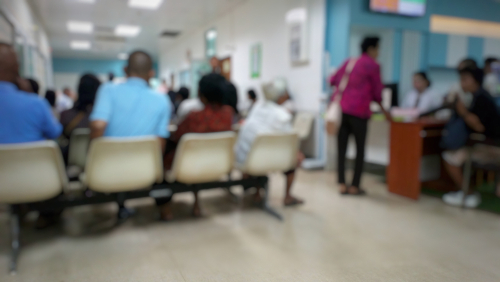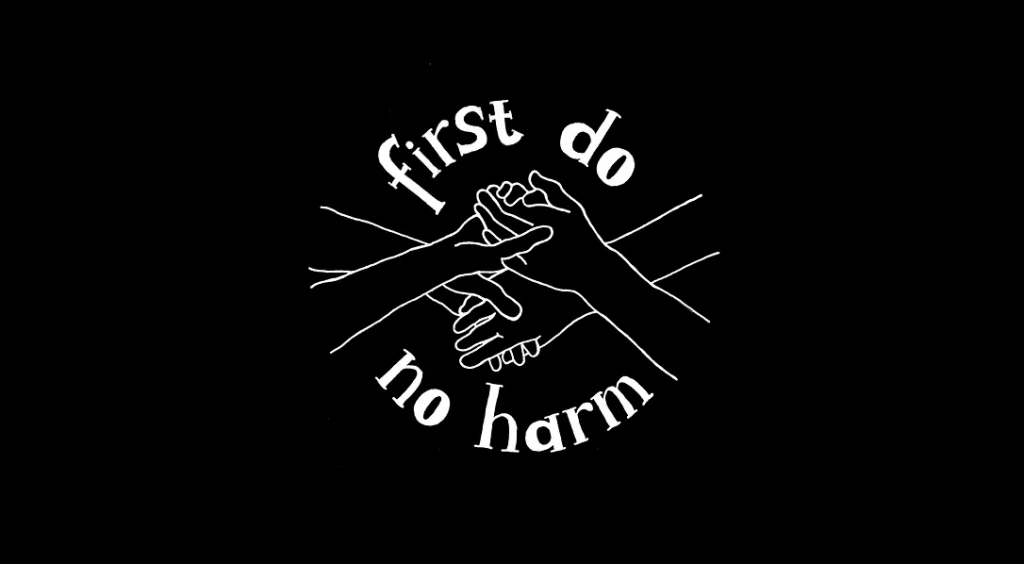A quick search on Google Scholar into coercive apply in psychological healthcare reveals the existence of 1000’s of analysis papers, every primarily involved with the ethicality of coercion in psychiatric care. Virtually unanimously, the papers argue that, as Sashidharan, Mezzina and Puras (2019) neatly summarise, “[coercive practice] in its numerous guises is embedded in psychological healthcare”. The final consensus of the analysis accessible is that coercive apply “must be prevented every time potential” (Müller et al., 2023).
When the innate energy imbalance between practitioner and affected person (and the near-biblical weight of the Mental Health Act in figuring out a affected person’s destiny) is taken into account, the interconnectivity of coercive apply and psychiatric remedy appears unavoidable. Coercion, then, just isn’t merely integral to psychological healthcare; it’s accepted as such.
Though there was a rise in analysis surrounding the applying of coercive practice in the previous couple of years, a lot of this analysis is fixated on whether or not or not coercion is critical, and, the place it’s used, its potential penalties for each sufferers and practitioners alike. There seems to be little or no analysis asking why coercive apply is so commonplace, and how its frequency could possibly be lowered. This weblog discusses one such research.

This research explores the idea that situations of staff-on-patient coercion may be predicted by sufferers’ circumstances.
Strategies
Müller et al.’s (2023) research Predicting coercion through the course of psychiatric hospitalisations explores the connection between a affected person’s scientific and sociodemographic circumstances and the consequential period and frequency of coercive measures used of their remedy, with the intention of figuring out ‘threat elements’ that correspond with a rise in coercion.
Information from sufferers detained at a 320-bedded grownup psychiatric hospital in Switzerland was analysed over three years. Regression fashions – statistical methods which intention to find out the standard of relationships between one dependent variable (on this case, acts of coercion) and numerous unbiased variables – have been utilized; these fashions have been then interpreted with the intention of unveiling what unbiased variables may predict a affected person’s publicity to coercion.
Outcomes
A big pattern dimension of knowledge from 8,700 sufferers, collected by clinicians over 16,607 voluntary and involuntary admissions at Switzerland’s largest psychiatric unit, was used within the evaluation.
Of the pattern, most sufferers (77.4%) have been admitted voluntarily while a minority (22.6%) have been admitted involuntarily. Information consisted of routine documentation collected by the hospital, diagnostic assessments primarily based on the ICD-10, and observer-rated scales GAF (World evaluation of Functioning) and HoNos (Well being of Nation Final result Scales). Each the GAF and HoNos intend to measure a affected person’s performance and observable signs of psychological sickness.
Final result measures
The measured outcomes of this research (known as coercion or coercive measures) have been restricted to 3 classes:
- Seclusion (confining a affected person to a locked room).
- Mechanical restraint (utilizing belts to strap a affected person to a mattress).
- Pressured treatment (medicating a affected person in opposition to their will by use of power).
Outcomes have been measured by frequency and the time between first and final software of coercion. The period of particular person episodes of coercion weren’t recorded and didn’t type a part of the research’s evaluation.
Predictive variables and course of
Müller et al.’s (2023) research recorded 14 unbiased variables in relation to every affected person and their respective admission/s. These included:
- Age, gender, civil and residential standing;
- German language expertise;
- Diagnostic class;
- Initiant of hospitalisation (self-referral, referral by GP, and many others.);
- No. of earlier hospital admissions and period of admission;
- GAF rating at admission and discharge;
- HoNos whole admission and discharge rating.
A bivariate evaluation (comparability of two variables to calculate the connection between these variables) was carried out by use of statistical software program. Final result measures have been mixed into one (dependent) variable, ‘coercion’, in order that bivariate analyses consisted of figuring out associations between acts of ‘coercion’ as a singular variable and sufferers’ particular person sociodemographic and scientific circumstances.
Analyses findings
Analysis of the collated information signifies that using coercion in a affected person’s admission was, on this occasion, bi-variately linked to the presence of particular variables:
- male gender,
- being widowed,
- having restricted German language expertise,
- displaying psychotic and manic episodes,
- being involuntary admitted to hospital,
- having decrease scientific performing at admission,
- having earlier hospital admissions, and
- admission being initiated by a medical clinician.
Coercion was exerted in a complete of 6.9% of circumstances, and, of the circumstances the place coercive measures have been utilized, not less than a second coercive measure was exerted 69.7% of the time. In 50% of circumstances the place coercion was current, the primary coercive measure was utilized throughout the first 3 days of admission.

Coercive measures have been extra probably for use within the first week of a hospital admission.
Conclusions
Müller et al. (2023) conclude that:
realizing the chance elements might assist to focus on preventive methods for these at highest threat. Particularly, interventions ought to deal with the essential timeframe firstly of remedy.
In abstract, the research argues that some scientific and nonclinical traits of a affected person, in addition to the character of their hospital admission (i.e. self-referred, referred by GP, and many others.), might predict the probability of coercive measures getting used throughout their admission to psychiatric hospital. Within the occasion of this specific research, the authors present that coercion happens extra regularly within the first week of a affected person’s admission.

An try to maneuver past moral debate and into ‘floor stage’ apply separates this research from others regarding coercion in psychiatric hospital settings.
Strengths and limitations
This research presents an intriguing exploration into associations between an individual’s sociodemographic and scientific circumstances and their expertise/s of coercion throughout hospital admissions. It contributes to an under-researched space by collating materials from current research on attitudes in direction of coercion so as to transfer past ethical debate and into day-to-day apply. The motivations of this research are clear, and its outcomes intend to be relevant ‘at floor stage’.
A number of the strengths of this research embrace
- The massive (albeit restricted – see paragraph under) pattern dimension.
- The potential for sensible software of ends in (not less than) the hospital the place the pattern was recruited.
- The suggestion of potential methods to scale back coercion. This part is necessary as a result of it recognises predictors for coercion past sufferers’ personal circumstances (i.e. at organisational stage).
Nevertheless, the research passed off at just one hospital, which introduces choice bias; sociodemographic information from sufferers at one location can’t precisely symbolize a neighborhood inhabitants of sufferers. Moreover, using coercion varies significantly throughout psychiatric hospitals (Mann et al., 2021), which means that the outcomes of this research might solely have implications for apply on the hospital the place the cohort was recruited. The authors don’t seem to have absolutely acknowledged this limitation.
Measurements used to categorise topics into publicity teams (corresponding to diagnoses and language expertise) are usually not all goal. As an illustration, the ICD-10, GAF and HoNos are instruments that depend on subjective perceptions and evaluations of a sufferers’ observable behaviour. The research design has allowed for a number of raters to document affected person information, creating a possible for inconsistency within the high quality of data and scientific opinion.
Likewise, circumstances of coercive apply have been calculated primarily based on information recorded by a number of hospital workers; that is unreliable, as the standard of knowledge probably fluctuated relying on the capability of the workers on shift at any time. The definition of seclusion used on this research was not clearly outlined in that it didn’t describe how lengthy a affected person wanted to be positioned in seclusion for it to be thought of coercion; this might have led to error or bias within the end result measurement.

A restricted pattern and points with the analysis design stop the outcomes of this intriguing research from being utilized to a wider inhabitants.
Implications for apply
Müller et al.’s (2023) findings recommend that some persons are extra prone to being uncovered to coercion when admitted to psychiatric hospitals than others. However how can these findings be applied in apply? Do the outcomes of this research have vital implications for psychiatry ‘at floor stage’?
Regardless of this research’s formidable drive for outcomes that would affect sufferers’ remedy programmes, it’s troublesome to ascertain the place the authors’ findings could possibly be utilised past the parameters of 1 Swiss psychiatric hospital and future analysis. Opting to carry out the research at just one hospital makes the outcomes basically inapplicable at others; variations in workers coaching, perceptions of coercion, and cultures inside completely different hospital settings have been neglected. Moreover, flaws within the design of this research have created room for subjective interpretation of affected person data and scientific presentation, which is especially dangerous when the authors have tried to work with info meant to be quantitative, and perceived as goal.
That being mentioned, there’s vital scope for analysis primarily based on a number of the secondary findings of Müller et al.’s research. As an illustration, the authors discovered that almost all incidents of coercion occurred inside a affected person’s first week of admission; 50% of sufferers who skilled coercion have been subjected to coercive measures throughout the first 3 days of their admission, and 50% of those that skilled coercion obtained their final coercive measure by the eighth day of their admission. A course the sort of analysis may observe can be to ask why that is the case; likewise, it could be fascinating to grasp why a number of the samples’ sociodemographic standing appeared to recommend they have been at better threat of being subjected to coercive measures.

By its basic nature, coercion is an act of power that removes or violates the freedom and selection of its sufferer; no person is an lively participant in their very own coercion.
Lived expertise reflections
As a earlier inpatient of psychiatric hospitals myself, it’s disappointing to see analysis that ascribes the reason for coercive remedy to the one that is themselves being coerced. Analysis that appears for the causes of coercion inside psychiatry by asking what a affected person has performed to ‘deserve’ to be coerced will solely ever take researchers so far as their preliminary query; if a affected person’s sociodemographic and scientific circumstances can predict whether or not or not they’re coerced, it’s not as a result of these circumstances ‘make’ them prone to coercion. Individuals, establishments and methods that coerce, put individuals prone to coercive remedy. By its basic nature, coercion is an act of power that removes or violates the freedom and selection of its sufferer; no person is an lively participant in their very own coercion.
In Müller et al.’s research, coercion is categorised as both seclusion, medical restraint or mechanical restraint. Comparable research are likely to have comparable classifications: Anderson and Neilsen’s (2016) research Coercion in psychiatry: the significance of extramural elements defines coercion as “belt restraint, bodily restraint, and compelled treatment”; Lau et al.’s (2020) observational research into decreasing coercion defines coercion as “seclusion, restraint, or compelled treatment”; and Hotzy et al.’s (2018) research into the prevalence of coercive measures defines the measures as “seclusion, restraint, coercive treatment”.
Only a few research into coercive apply in psychiatric inpatient care acknowledge ‘delicate’ acts of coercion, which are sometimes intrinsic to established psychiatric remedy programmes and generally skilled by sufferers. ‘Refined’ coercion contains:
- Verbal threats and emotional blackmail, e.g. ‘when you refuse to take your treatment, we’ll should inject you with it’ or ‘when you refuse to eat, we’ll should ship you to a safer unit farther from dwelling’.
- Non-verbal/implicit threats and emotional blackmail, e.g. realizing that refusal to have interaction with the therapeutic programme will lead to deprivations of liberty; realizing that you could be be sectioned, put in seclusion, or restrained at any time.
- Punishment-reward system for therapeutic engagement, e.g. permitting sufferers entry to liberties for ‘constructive’ behaviours and denying sufferers entry to liberties because of ‘unfavourable’ behaviours.
Omitting ‘delicate’ acts of coercion from analysis reinforces perceptions of sufferers as being liable for coercion; overtly coercive measures are likely to happen in situations the place a clinician may argue that coercion was vital for the protection of the affected person and/or others within the neighborhood. It’s a lot more durable to understand a affected person as liable for ‘delicate’ coercion, like threats, blanket restrictions and punishment–reward methods.
Thus, I imagine that the one method to progress with analysis into using coercion in psychiatry – particularly with the intention of decreasing coercive apply – is to not ask why particular person sufferers themselves are subjected to coercive measures, however as an alternative to ask why clinicians, establishments and systemic psychiatric ideologies and values rely on coercion as a way of detaining and treating sufferers. If we will start to grasp what underpins coercion in psychiatry, then, hopefully, we will start to maneuver in direction of remedy that promotes dignity, liberty and empowerment.

Nima is co-founder of First Do No Hurt, a non-profit organisation in opposition to the abuse of individuals in psychiatric hospitals. She has beforehand skilled coercion in hospital settings.
Assertion of pursuits
I’ve beforehand been an inpatient at psychiatric hospitals and have private expertise of coercive measures. I’m additionally co-founder of non-profit organisation ‘First Do No Harm’ which intends to enhance affected person experiences of inpatient psychological healthcare and eradicate institutional abuse.
Hyperlinks
Main paper
Müller M, Brackmann N, Jäger M, Theodoridou A, Vetter S, Seifritz E, Hotzy F. (2023) Predicting coercion through the course of psychiatric hospitalizations. Eur Psychiatry. 2023; 66(1): e22. Printed on-line 2023 Jan 26. doi: 10.1192/j.eurpsy.2023.3
Different references
https://www.nationalelfservice.net/publication-types/umbrella-review/coercion-mental-health-act/
https://www.sciencedirect.com/science/article/pii/S0160252723000614
https://www.frontiersin.org/articles/10.3389/fpsyt.2021.790886/full
https://www.ncbi.nlm.nih.gov/pmc/articles/PMC7032511/
https://www.tandfonline.com/doi/full/10.1080/08039488.2016.1190401
https://www.frontiersin.org/articles/10.3389/fpsyt.2020.00465/full

